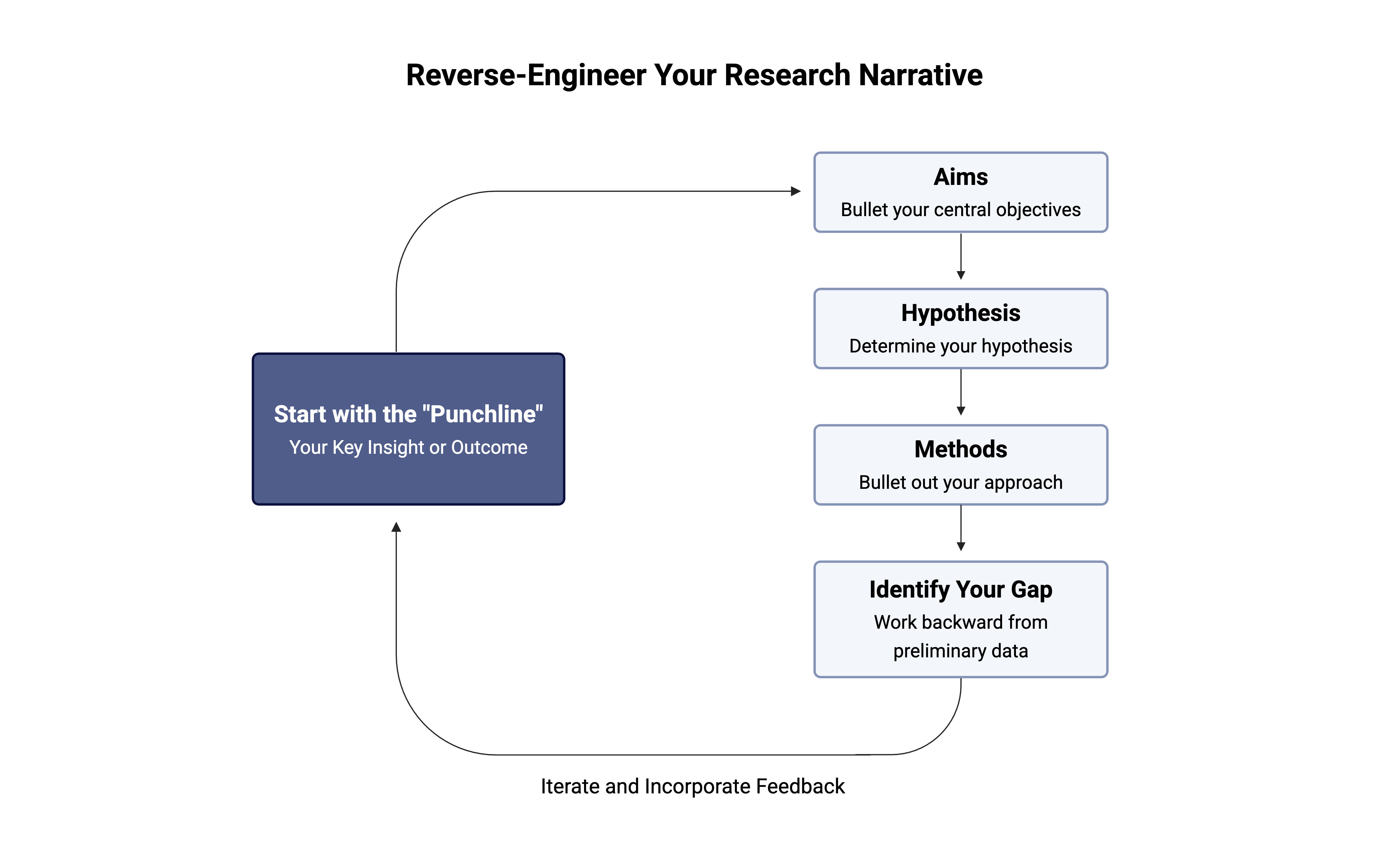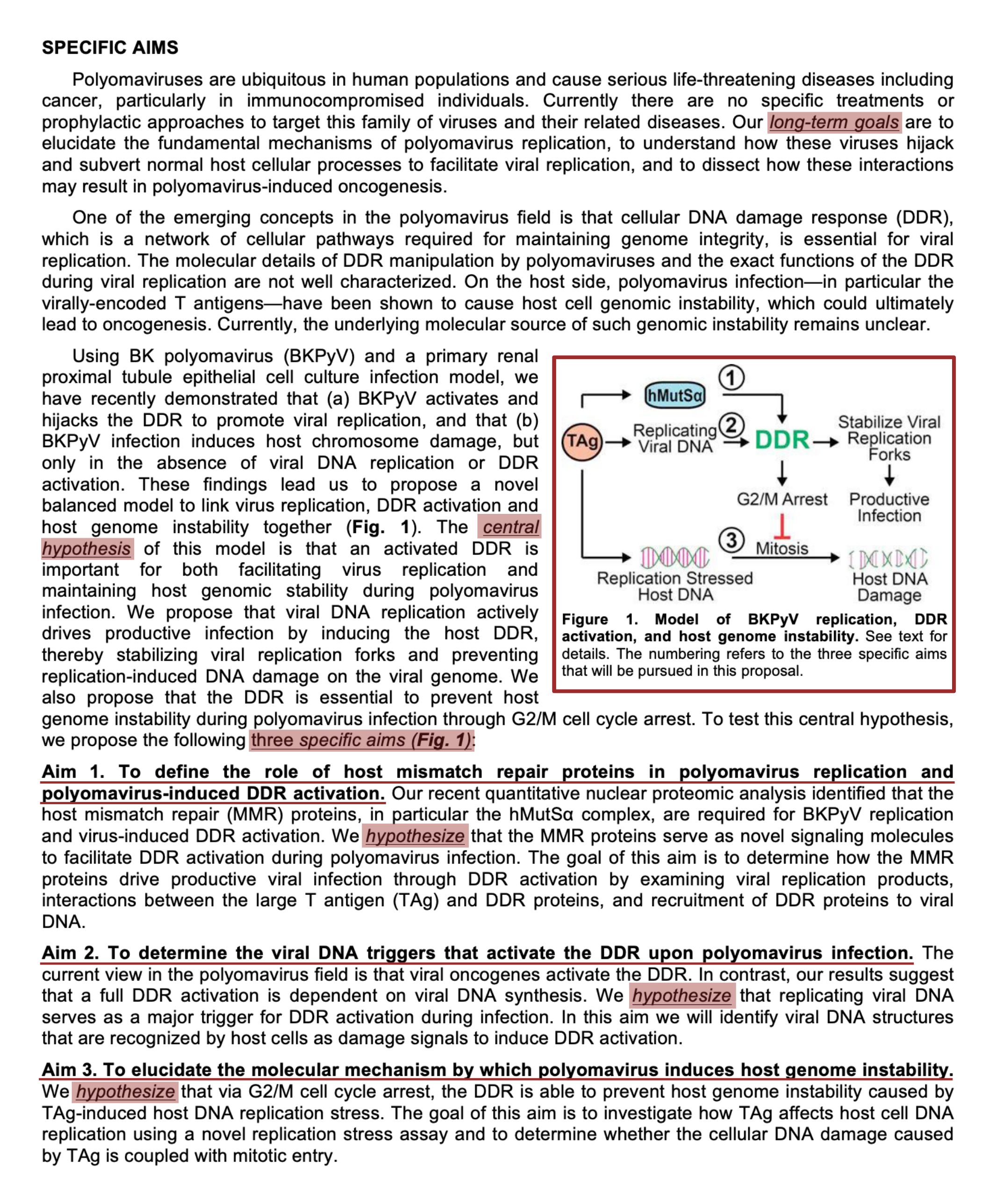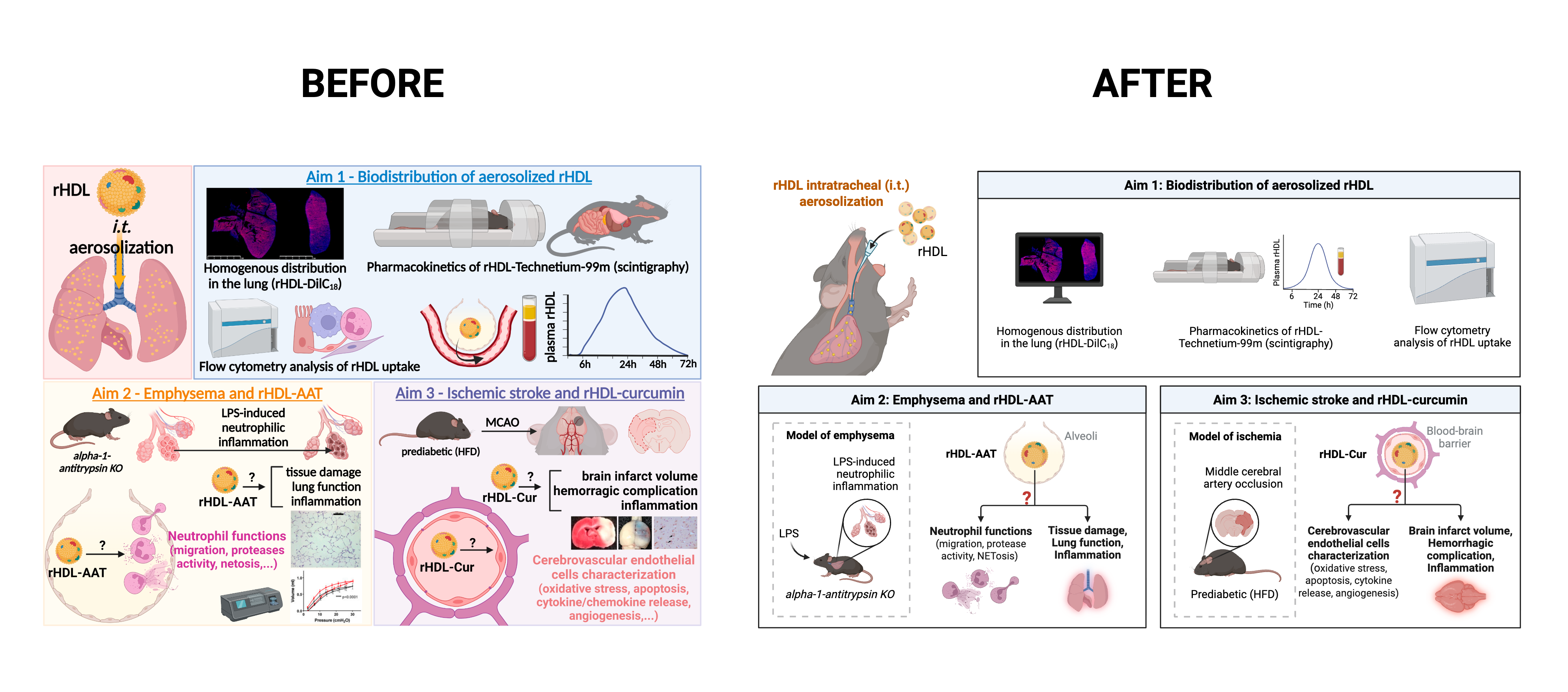This toolkit distills five actionable tips from our recent expert panel featuring Shiz Aoki, Co-Founder and CEO of BioRender, and Angela Andersen, Founder and CEO of Life Science Editors and former Cell Press Editor, to help you craft a compelling research story that resonates with reviewers.
In today’s highly competitive funding environment, these proven strategies will help you structure your proposals so reviewers can immediately grasp your impact and significance.
1. Work Backwards from the Key ‘Punchline’ to Tell Your Story
Before you start writing, create a roadmap for your proposal. Angela Andersen recommends beginning with the “punchline”: the key insight or outcome you want reviewers to remember. From there, reverse-engineer your research story to identify your gap and connect back to your central message.

Quick Tips:
- Lead with the Punchline: Start with the key takeaway, then bullet your Aims, Hypothesis, and Methods so they reinforce it, working backward from preliminary data to identify the gap.
- Follow a Narrative Flow: Clearly answer ‘What do we know? What don’t we know? Why don’t we know it? Why does it matter? Why are you the person to solve it?’
- Always align with the grant-specific framework for best likelihood of success.
- Always align with the grant-specific framework for best likelihood of success.
- Show, Don’t Tell with Data and Visuals: Use clear graphs and visuals to make complex concepts understandable at a glance. Reviewers love to draw their own conclusions from the data.
- Use tools like BioRender Graphing to help ensure your data is visually intuitive.
- Emphasize Your Role: Highlight why you are uniquely positioned to tackle this challenge, including your expertise, tools, resources, or collaborators.
- Make a Grant Writing Plan: Choose a process that works for you. Do you prefer to break the work into clear stages and move steadily toward submission, or do you prefer a last-minute sprint?
- Trust in the process: there will be good and bad days, there will be drafts that end up in the trash, and there will be breakthroughs.
2. Draft Within Your Final Format
Your grant narrative, visuals, headings, captions, and even page breaks all work together to tell the story. Don’t wait until the last minute to drop your text and visuals into the final layout. Draft and design in the final format from the start so your proposal is cohesive and skimmable.
Angela's Advice?
"The first thing is, can I skim it? What's important to see is that it’s visually clear. Can I identify subheadings? Can I find the hypothesis and the gap?”
Quick Tips:
- Draft Directly in the Final Format: See how each section flows visually because this is exactly how your reviewers will experience it.
- Balance Text and Visuals Early: Add clear, descriptive headings, subheadings, visuals, and captions as you go. Avoid saving these for the end, which can cause a major rework.
- Design for the Skim Test: Ensure subheadings, hypotheses, and objectives are instantly visible. Apply formatting styles (bold, italics, underline) sparingly, intentionally, and consistently.
- Use White Space Deliberately: Guide reviewers’ eyes and make the reading order intuitive.

3. Don’t Neglect to Address Pitfalls and Alternatives
The Potential Pitfalls section is where reviewers assess your scientific rigor and credibility. Angela Andersen emphasizes that vague statements like “We anticipate no issues” signal inexperience. Reviewers want to see that you’ve thought critically and have a plan when things don’t go as expected.
Quick Tips:
- Identify Your Specific Risks: outline potential challenges or limitations in your experimental design, methodology, or data interpretation.
- Propose Alternatives: Proactively outline alternative strategies for each challenge.
- Demonstrate Credibility: Use this section to reinforce that you understand the literature, the risks, and how to troubleshoot.
- Highlight Support: If collaborators will help address technical gaps or alternate strategies, include that detail and letters of support when possible.
4. Design Visuals that Tell Your Story at a Glance
Visuals should do more than support your proposal. They should accelerate a reviewer’s understanding and conviction. As Shiz Aoki emphasizes, grant figures are often the first (and sometimes only) thing reviewers look at. You have seconds to convey your research story.
BioRender’s Visual Tips:
- Simplify the Story Flow: Arrange your visuals in a clear top-to-bottom or Z-formation layout. Avoid collage-like layouts.
- Declutter Your Visuals: Strip away unnecessary icons, text, and visual noise. Leave only the main “characters” that drive your story.
- Highlight Impact Using Color: Start visuals in grayscale, then reintroduce color sparingly to highlight key elements.
- Tailor to Your Audience: Simplify visuals even further if your reviewers are from general scientific committees, philanthropic foundations, or industry panels.
- Use Design Tools to Save Time and Elevate Quality: Create clear, reviewer-friendly visuals faster with tools like BioRender. Prioritize clarity over perfection so a reviewer can interpret at a glance.
- Save time and maintain visual consistency by starting with BioRender’s pre-built templates and scientifically accurate icon library.
- Try out AI tools (carefully) to kickstart your visual layout, but rely on your scientific judgment for the final design.

5. Peer Review Your Proposal Early and Frequently
Before you submit, test your proposal exactly as a reviewer would experience it. Do a “skim-test” with a peer who hasn’t read your proposal. Can they explain your project back to you after five minutes?
Quick Tips:
- Do a “Skim Test”: Ask a colleague unfamiliar with your grant to read it for five minutes. Can they clearly explain your key takeaways, Aims, and Hypothesis back to you?
- Build a Writing Group: Set recurring sessions with peers to exchange feedback, stay accountable, and maintain momentum through the writing process.
- Create a Feedback Routine: Plan multiple review cycles early. Each iteration should improve clarity, logic, and persuasiveness.
Ready to Strengthen Your Next Grant Proposal?
BioRender’s Grant Support Initiative is offering nearly $200K in expert-led figure design support, grant editing resources, and BioRender Premium access for your lab. Submit your BioRender figure by August 20th for a chance to win and strengthen your next submission!
→ Click Here to Enter the Grant Support Initiative








